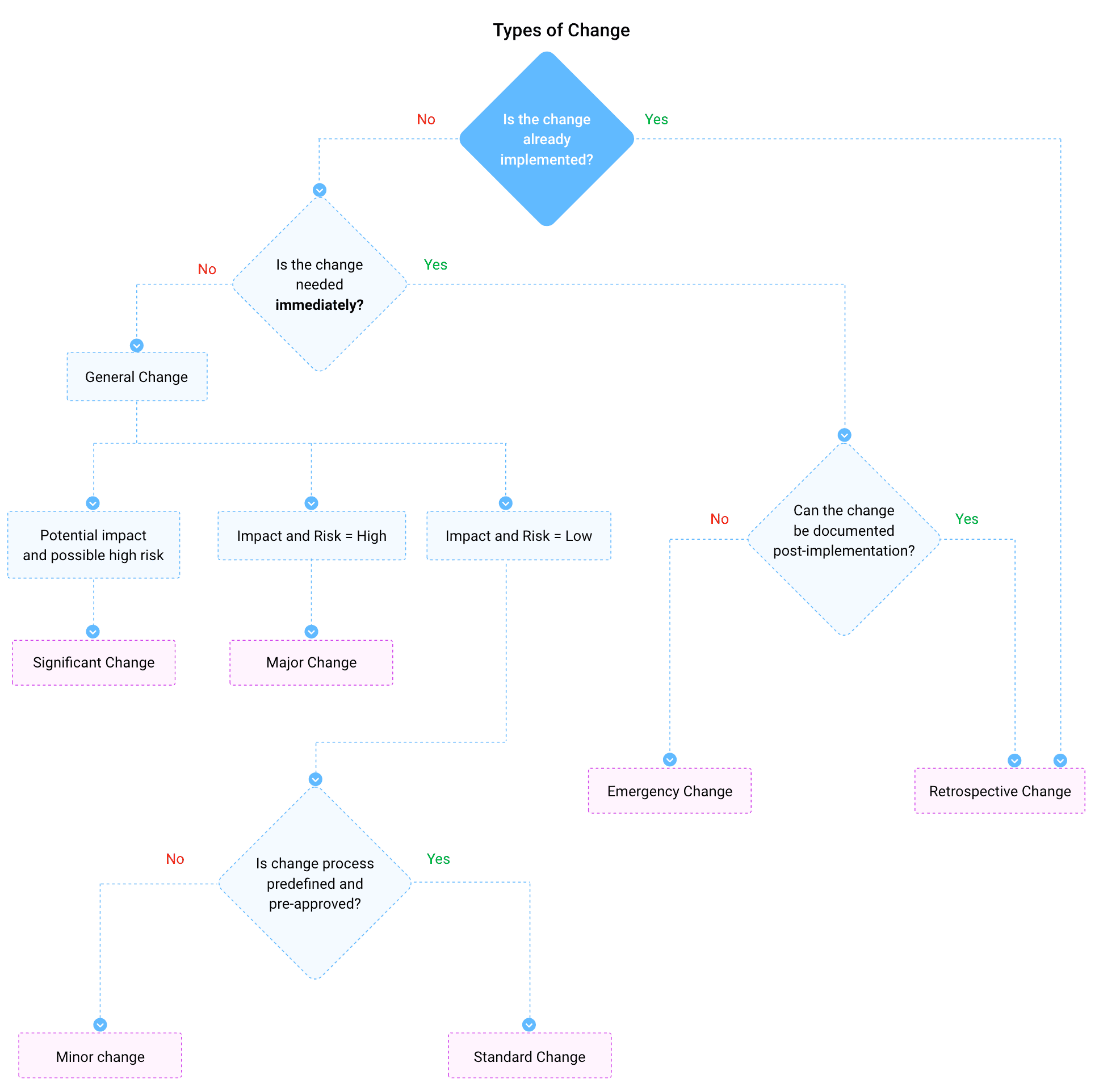Change Enablement
Change is defined as a planned activity involving addition, modification, or removal of a component/service that can impact an organization's processes and services.
Change management ensures that changes are carried out methodically using standardized methods and procedures, to minimize the impact of incidents/problems and consequently to improve the day-to-day operations of the organization.
ServiceDesk Plus allows service agents to track the change process extensively using to change requests. A Change Advisory Board (CAB) is used to assess the risks involved, authorize changes, and manage the change schedule. Each change request goes through 8 stages, with multiple statuses in each stage:
* Submission
* Planning
* Approval
* Implementation
* UAT
* Release
* Review
* Close
Change management often functions as an extension of problem management. It addresses the problem root cause and brings in a permanent solution to prevent further disruptions to normal service operations.
Change management also works in tandem with project and release management. Service agents can manage resources involved in a change through projects and implement the change via release requests.
Types of changes
General/Normal Change
General/normal changes are implemented when a non-emergency change is required in the organization's working environment. The approvals and procedure for handling general changes vary for each change and has to be worked out from scratch.
Example: Migrating data to a new server.
Emergency Change
Emergency changes are implemented when there is a pressing deadline. The emergency change workflow skips the basic preliminaries and maintains minimal approvals to ensure the change is implemented immediately.
Example: Updating patches for a software when a security threat is detected.
Retrospective Change
Retrospective changes are implemented based on need/urgency by obtaining approvals via voice calls or mails and then documented after the change is implemented. Communication and implementation occur outside ServiceDesk Plus, while the change is recorded later for documentation purposes.
Example: Reconfiguring mail server outside operational hours with over-the-call approvals from available stakeholders when the mail server went offline.
Standard Change
Standard changes are routine, low-impact changes with predefined processes. Standard changes are also pre-approved as the impact/risk are analyzed and authorized when they are implemented for the first time. Subsequently, the change can be implemented without such precautions as long as the process is not modified.
Example: Replacing a repaired printer with an identical model.
Significant Change
Significant changes are high impact changes usually approved by CAB members. They have a direct impact on data, security, or privacy of the organization.
Example: Upgrades to servers where client data is stored.


